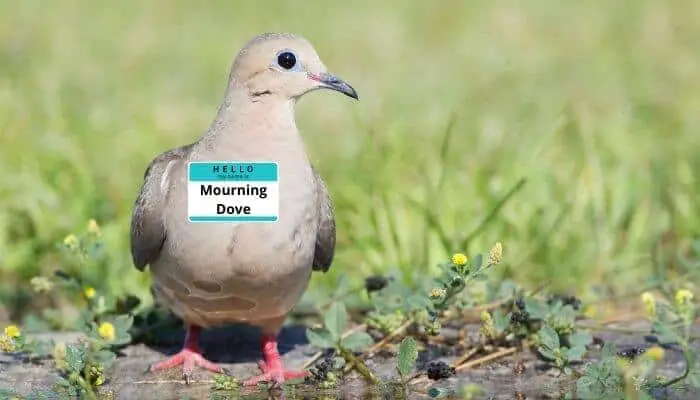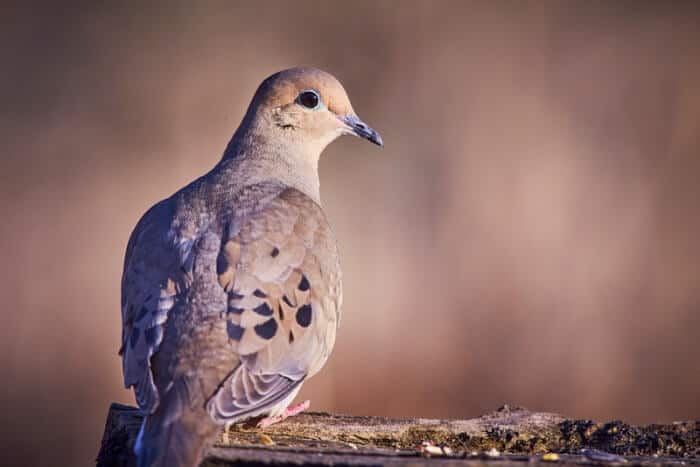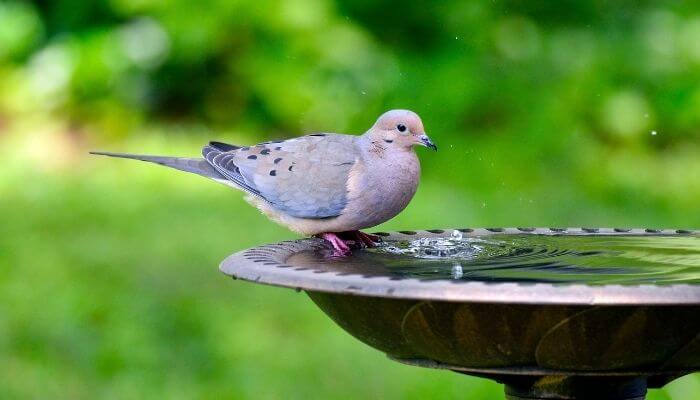Also known as the turtle dove and rain dove, and previously known as the Carolina pigeon or Carolina turtle dove, the mourning dove is one of the most abundant and widespread birds of North America.
They have their rather sad-sounding name because of their call.
How Did Mourning Doves Get Their Name?
The general consensus is that the mourning dove has its name due to the sad and haunting cooing sound that they tend to make.

The sound is described as a melancholy, mournful noise that evokes sadness and despair.
There is no specific knowledge of who first coined the name because the taxonomy of the breed gives no hint.
After going through various classifications while a number of breeds were distinguished from each other, the mourning dove ended up with the Latin name Zenaida Macroura.
The Vocalisation of the Mourning Dove
The exact sound is a woo-OO-oo-oo-oo. If you get close enough, you may hear a grating or throat-rattling sound right before the first coo.
The inexperienced may confuse the sound with the call of an owl.
Variations of the sound include the call made by males to attract females which is a cooOOoo.
Other vocalizations are a short roo-oo used as an alarm call and a soft ‘ork’ noise used as a greeting.
Also in their catalog of sounds is a distinctive whistling noise its wings make when taking off and landing in flight.
It takes a bit of practice to discern the mourning doves call from other birds in the wild but it happens as you gain familiarity with different species.
What is a Mourning Dove?
The population of mourning doves in the USA is estimated to be 350 million, quite a feat considering that it is the country’s leading game bird and as a result of dove hunting, more than 20 million birds are taken for both sport and meat annually.
Known as the American mourning dove outside of the USA, the species covers nearly 7 million square miles of territory taking in the continental USA, southern Canada, Mexico and the Greater Antilles (Cuba, Hispaniola, Puerto Rico, Jamaica, and the Cayman Islands).

The mourning dove is the national bird of the British Virgin Islands!
Although there have been sporadic sightings in places as far-flung as Hawaii, Iceland and Great Britain, populations have not become established.
Mourning doves are quite muted in colour, being a light grey to earthy brown. Both males and females are similar in appearance compared to other breeds that can vary greatly between sexes.
The species is generally monogamous and produces two young squabs per brood. In warm areas, one pair may raise up to six broods a year
Both male and female parents take turns to incubate and care for their young and mourning doves almost exclusively stick to a diet of seeds.

That is, of course, except for the young who are fed crop milk by their parents until they are sufficiently grown.
The mourning dove can be confused with the Eurasian collared dove which unlike the mourning dove is not a native bird to the Americas.
The Eurasian collared dove is larger and is a pinky grey colour.
It also doesn’t have the same vocalisations as the mourning dove.
It is also not to be confused with the African mourning dove although that is less likely to occur than with the Eurasian collared dove and American mourning dove because the African breed is only found in Africa.
